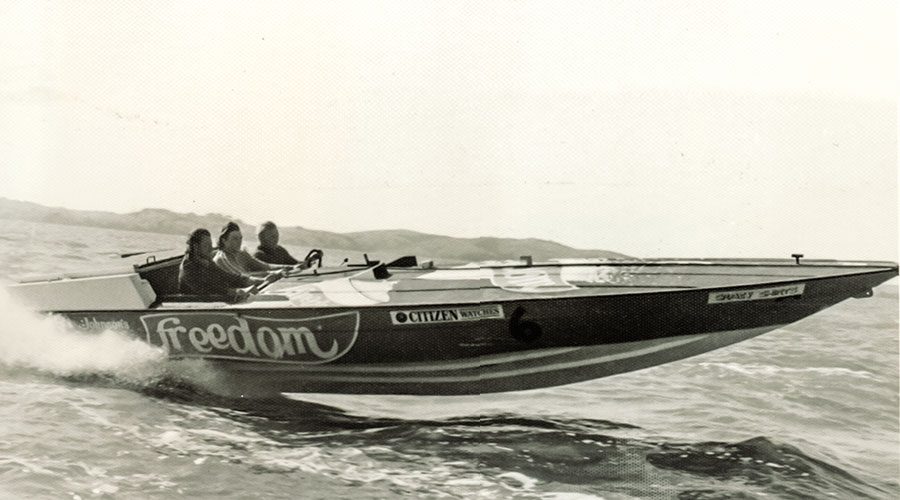

Last issue we learned that Gerard Richards and his mates were V8 racing addicts, seduced by the mighty Mustang and Camaro track cars of the late ‘60s, an allegiance transferred to the power boat racing scene of the 1970s, strongly contested in the early years by outboard-powered race boats. This issue features the major players later in the decade, when V8 power made inroads, plus some honourable mentions.
Just when it seemed multi-rig outboards were the recipe going forward, the focus shifted dramatically back to big V8s in 1973.
The arrival of the Jim Mackay designed 8.5-metre (27-foot) MacKay hull Old Crow for Spinner Black, equipped with a finelytuned 454 cu in LS7 Chevrolet V8 from Black’s engine shop, changed all that. This combo and its sister ships were to set the benchmark for speed and endurance over the next four to five years.
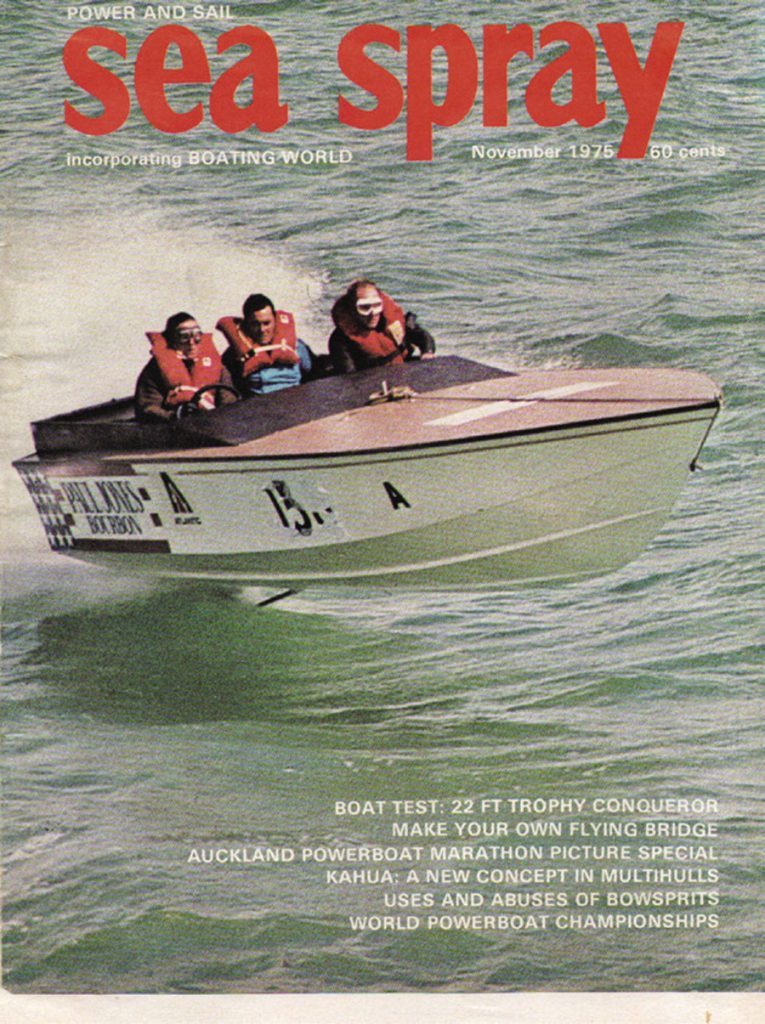
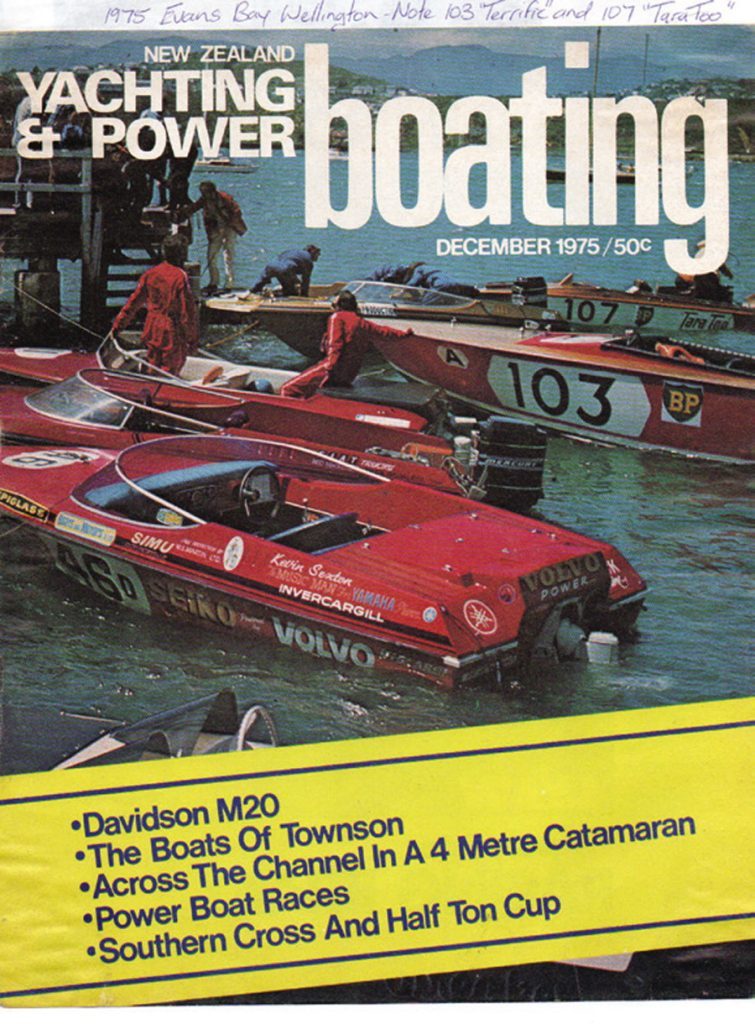
As Spinner told me in 2008, “After the mixed results with his first boat Turtle, that included it catching fire on one occasion and nearly sinking on another, he wanted the best craft he could put in the water.” In Spinner’s words, “Jim Mackay built a beautifully sculptured, strong and very seaworthy deep vee. It was also a very fast one, fitted with a hand-built 7440cc 454 cu in big block Chevrolet LS7 V8 race engine from our workshop”.
Along with fellow crew members Graeme Hastie, Mackay and Black, they won everything that mattered in 1973, with four wins and two sixth places. But with the championship pinned on one driver, rather than the boat, and Spinner not always available due to business commitments, it went by default to Max Johnson in his new triple 150hp Mercury rig Miss Comsec 2.
Spinner was looking to make amends, by taking out the driver’s title in 1974, with the same Mackay hull, now renamed Camel Filter. Going head-to-head with Jim Mackay, running his own boat Topaz this season (co-owned and crewed by Dick Mitri), with similar 454 Chev V8 power, it looked like a massive showdown of the big-block titans. However, it wasn’t to be.
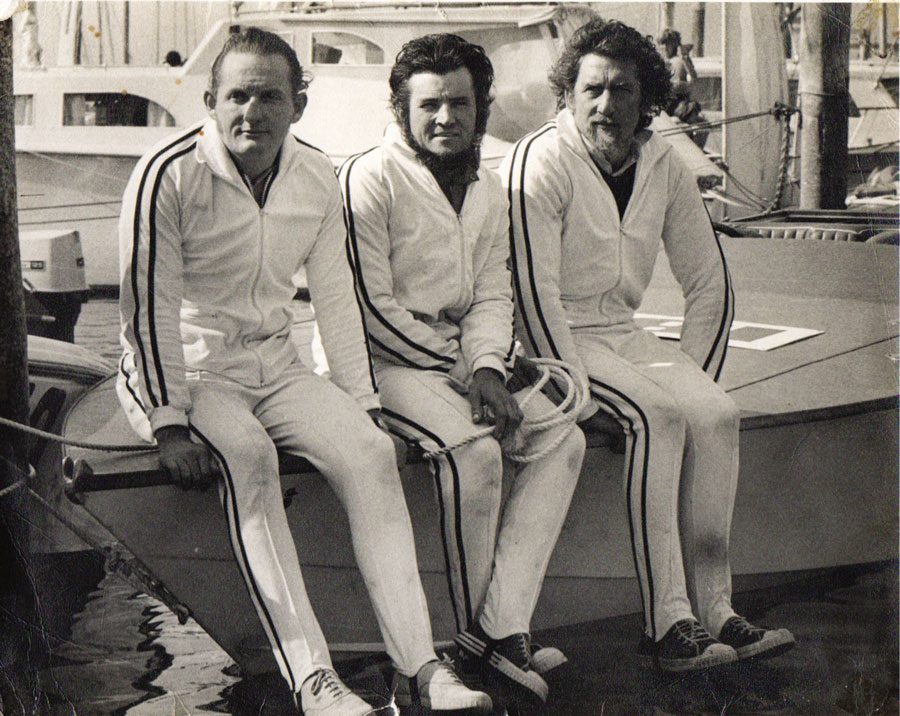
As Spinner relayed to me years later, “It would go like gangbusters for most of the races, then go off in the latter stages. Then the penny dropped – we’d mistakenly fitted too hot plugs when preparing for the season and never dropped to it until too late.”
Jim Mackay with Topaz cleaned up with seven wins from the nine races and Spinner and Camel Filter only managed a solitary win at Napier.
A big factor in the Mackay and Mitri Topaz demolition of the opposition was the beautifully-built racing engines prepared by Jim Carlise of C & W Motors. The only other outright victory went to Max Johnson’s triple 150hp Mercury rig Clipper Comsec at the Atlantic Six Hour Marathon.
Brian Crouch repeated the dose when he purchased Spinner’s old boat in 1976 (Old Crow/Camel Filter) now known as Cossack Vodka. He was to also enjoy a great winning streak with crew Neville Thomson, Bob Udy and Alywn Flexman, with five victories including the Atlantic 100, Rotorua, Taupo, the Auckland Marathon and New Plymouth, also going on to win the Atlantic Drivers’ Elite Offshore Championship.

Brian was a cow cockie out of Tuakau (South Auckland) and his crew were all volunteers. Preparing their boat out of a country garage on a shoestring budget, it was a great achievement to get those results – as Brian summed up in similar words to Spinner’s: “Racing frontline powerboats in the open water, with the turbulent water of mass starts, racing in choppy harbours and the swells of the open ocean, was a sobering experience. We were darned right scared shitless at times…” he said.
An interesting aside: Brian told me recently he still retains the trophy for winning the Atlantic 100 in 1977, as it was the last time the race was run and no one asked for it back.
Following a partially successful 1977 season, Brian sold Cossack Vodka to Harry Servicus, and it continued racing under the name of Brut 33.
Tracing the continuing incarnations of the Mackay 27-foot foot hulls is an interesting and somewhat confusing exercise in boat racing genealogical history. I make no claims to bulletproof accuracy here, but it seems the original Old Crow hull, continued through Camel Filter, Cossack Vodka, Brut 33 and then possibly became Pall Filter.

That owner apparently drilled holes in the boat’s ribs to lighten it, causing it to break in half. It was later rebuilt as The Nail, a reference to its previous calamity and it may have continued racing under the name Foden Force, but I stand to be corrected on this. The boat’s whereabouts these days are unknown, despite attempts by Brian Crouch and others to track her down.
The other Mackay boat was Topaz and she continued in 1975 as Paul Jones Bourbon. After that the trail goes cold, but this boat has since been found and restored to its Topaz livery and continues to appear at historic offshore power boat regattas. It seems there have been a couple of other copies made of these classic Mackay hulls, but to my knowledge there were only the two ‘official’ original hulls built.
While on the topic of surviving original offshore race boats of the 70s era, it would be interesting to know if there are any other classic offshore warriors still in existence. I know Tara Too has been partially restored – are there any others out there?
Email me at mairangiman@hotmail.com if you have any information.
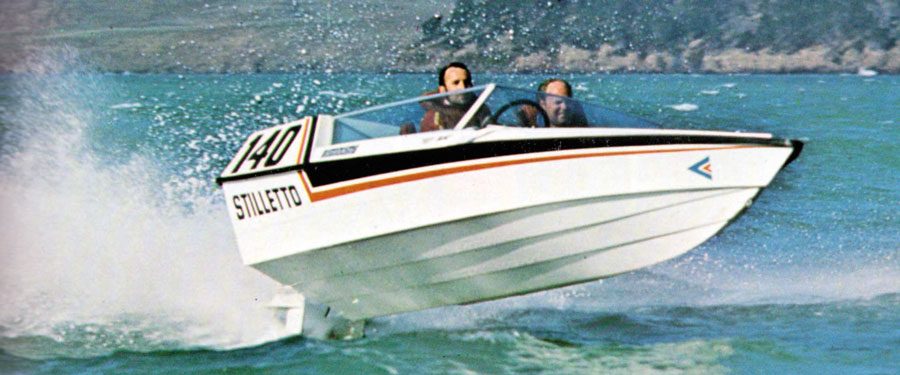
END OF AN ERA
For that brief window of the 1970s my adolescent mates and I were hardcore fans of that golden era of monohulls, when the heavy V8-powered artillery duked it out with the sophisticated multi-outboard rigs. We had grandstand seats, the best in the house on Devonport Wharf, Auckland and those thundering, heroic boats of the era certainly played to the gallery. Vintage times, they were, when big-time powerboat racing caught the public’s imagination.
As the 70s came to an end, the playing field for offshore powerboat racing was changing in New Zealand. The era of the large American automotive V8 inboard and multi-rig outboard monohulls was ending. The new competitive formula emerging was for multi-hulled outboard-powered catamarans, one of the early successes being E.I.T Mover, which won a trifecta of championships between 1982 and 1985. But that is a different story.
A legendary era of offshore powerboat racing monohulls had passed. BNZ
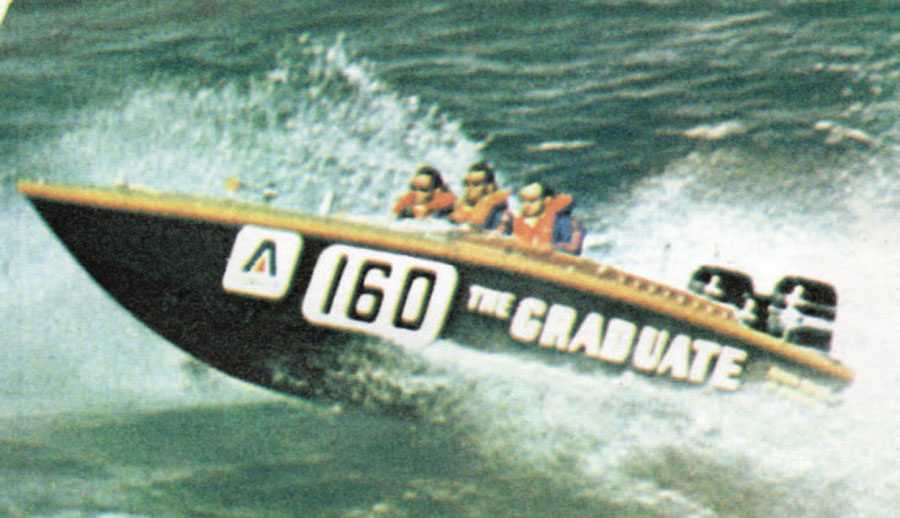
MORE NOTABLE BOATS
While the boat combos I’ve mentioned this issue and last were the heavy hitters through most of the 70s, many others saw a slice of the action.
Chevrolet V8-powered Roaring Rat was first in the Rothmans 70-mile Taupo race in 1971, third at Taupo in 1972, and fourth at Taupo, 1974.
Clipper Blackjack, 2 x 200hp Volvos, was second in the Atlantic 100 in 1974.
The Graduate powered by 3 x 150hp Mercurys and driven by N. Watts scored second in the 1973 Atlantic 100 and sixth at Queenstown in 1973.
Aurora, powered by a 454 cu in Chevrolet V8, was second in Tauranga, 1974.
Tormentor (later Big John) driven by W J Bryan and powered by 2 x 140hp Johnsons finished second in the 1972 Atlantic 100.
Gobbla Hunter, powered by 2 x 135hp Mercurys and driven by B. Shaw, was third at Gisborne in 1975.
Vanishing Point, a 26-foot Levi design, and Alamo were a duo of big inboard racers, but they didn’t score any significant finishes that I’m aware of.
Portage Hotel, powered by 3 x 150hp Mercurys finished second at Taupo in 1974.
These are just some of the many boats to score top places over the years – by no means a comprehensive list. My apologies to other worthy candidates that aren’t included here. Also, I haven’t included the South Island scene, as that is altogether another story.




